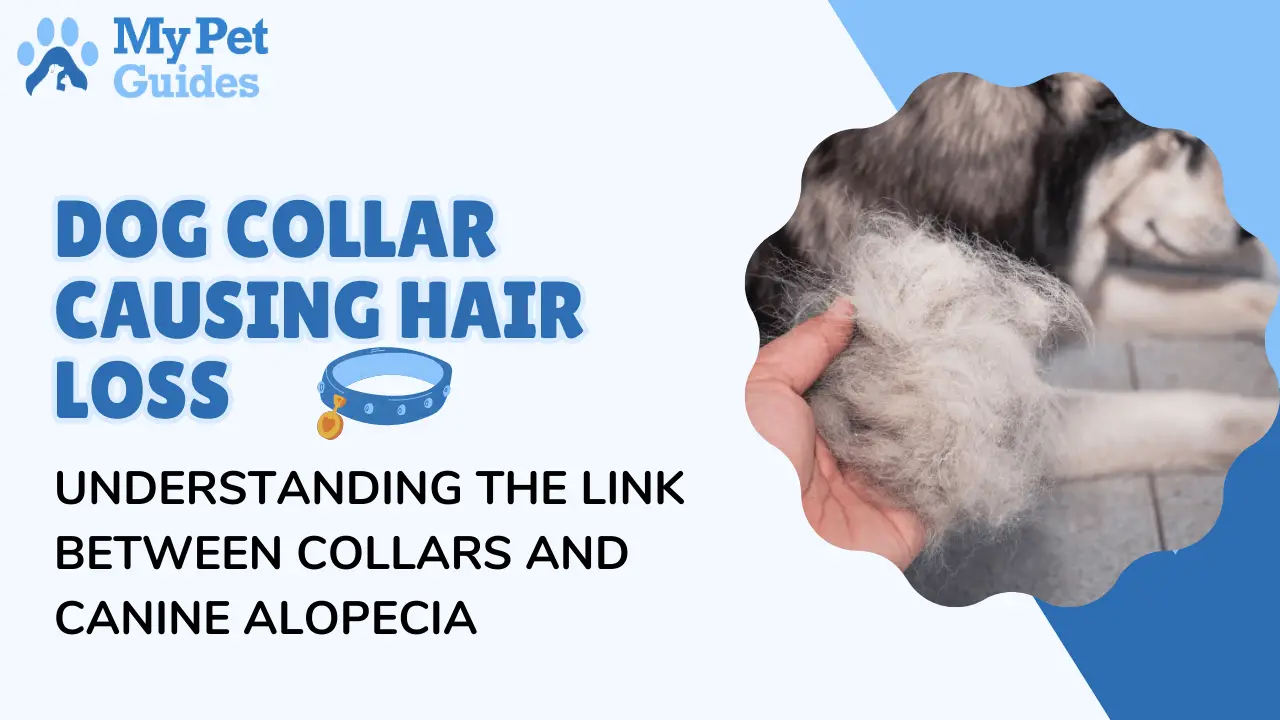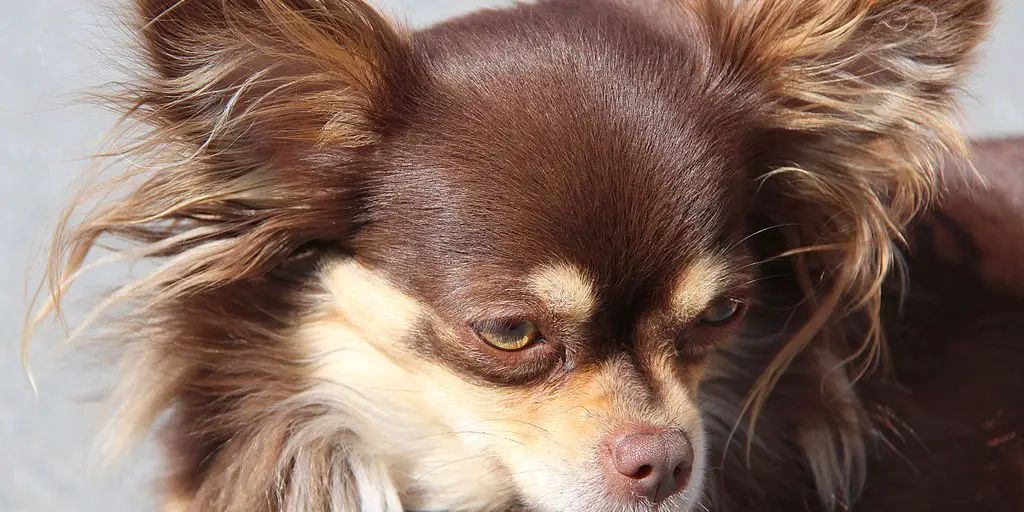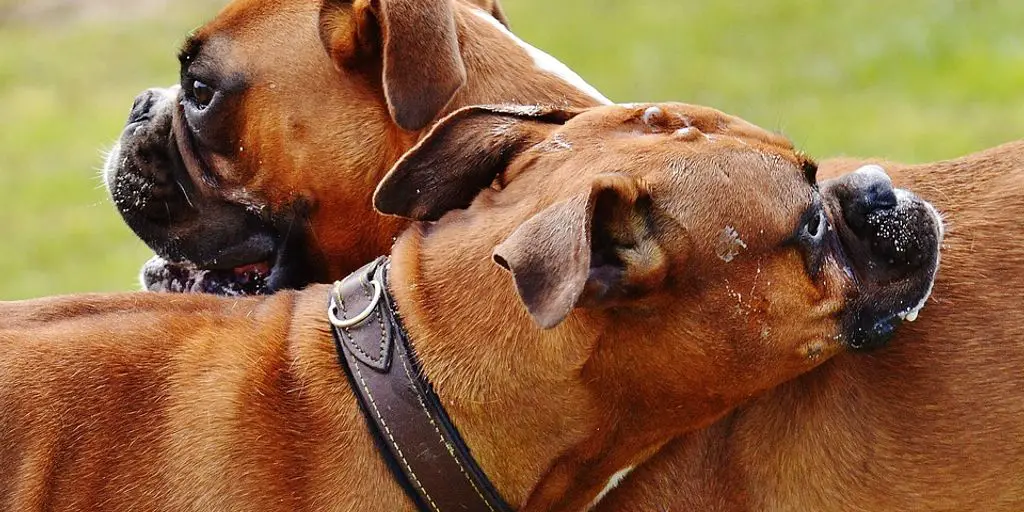Dog collars are an essential accessory for dogs but can also cause hair loss if not used properly. Hair loss due to a dog collar is a common problem caused by various factors. The most common cause of hair loss due to a dog collar is friction and rubbing.
When a dog collar rubs against the neck, it can break hair shafts and damage the skin, leading to hair thinning or bald patches. This problem can be exacerbated if the dog has sensitive skin or the collar is too tight. A very tight collar can cut into a dog’s neck in extreme cases. Neglecting to replace a puppy-sized collar on a growing dog can also cause this problem.
Can a dog collar cause hair loss?
Dog collars are essential for keeping dogs safe and under control. However, improperly fitting collars can cause discomfort and even hair loss. Hair loss can sometimes be a sign of a more significant problem, so it’s essential to address the issue promptly.
Too tight collars can cause chafing and irritation, leading to hair loss. If the collar fits correctly, but the hair still falls out, the dog may be allergic to the material. A tight collar can cut into a dog’s neck in extreme cases, leading to more severe issues.
It’s also essential to note that some breeds are more prone to hair loss than others. For example, breeds with short or fine hair, such as Greyhounds or Whippets, are more susceptible to hair loss from collars. Similarly, dogs with sensitive skin or allergies may be more prone to hair loss from collars.
It’s crucial to ensure that the collar fits correctly to prevent hair loss from collars. A good rule of thumb is to fit two fingers between the collar and the dog’s neck. It’s also essential to check the collar regularly to ensure it’s not too tight or causing any irritation.
In conclusion, dog collars can cause hair loss if they are too tight or made from materials the dog is allergic to. To prevent hair loss, it’s crucial to ensure that the collar fits correctly and is not causing any irritation. If hair loss persists, it’s best to consult a veterinarian to rule out any underlying health issues.
Understanding Dog Collar Hair Loss
Dog collar hair loss is a common problem that many dog owners face. Various reasons, such as friction, pressure, allergies, and infections, can cause it. This section will discuss the leading causes of dog collar hair loss and how to prevent it.
Role of Friction and Pressure
One of the primary reasons for dog collar hair loss is friction and pressure. When a collar constantly rubs against your dog’s neck, it can break hair shafts and damage the skin, leading to hair thinning or bald patches over time. This problem can be exacerbated if your dog habitually pulls on the leash or scratches at their collar.
Choosing a collar that fits properly and does not rub against your dog’s skin is essential to avoid this. You should also avoid leaving the collar on for extended periods, especially when your dog is not supervised. If you notice any signs of hair loss or irritation, immediately remove the collar and consult your veterinarian.
Seasonal Shedding Vs. Hair Loss
It is important to note that seasonal shedding is a natural process in dogs, particularly during the spring and fall. During this time, dogs may lose more hair than usual, which can be mistaken for hair loss. However, this is a normal process and should not cause concern.
On the other hand, hair loss due to collar irritation is typically more localized and may appear as bald spots or patches. If you notice any signs of hair loss unrelated to seasonal shedding, it is essential to consult with your veterinarian to rule out any underlying health issues.
Symptoms of Alopecia in Dogs
Alopecia, or hair loss, is a common symptom of many dog skin disorders. In addition to collar irritation, hair loss can be caused by infections, parasites, allergies, and hormonal imbalances. Some common symptoms of alopecia in dogs include:
- Bald spots or patches
- Itching or scratching
- Redness or inflammation
- Scaly or flaky skin
- Oozing or crusting
If you notice any of these symptoms, it is essential to consult with your veterinarian to determine the underlying cause of the hair loss and develop an appropriate treatment plan.
In conclusion, dog collar hair loss can be a frustrating and unsightly problem for many dog owners. By understanding the causes and symptoms of hair loss, you can take steps to prevent it and ensure that your dog’s skin and coat remain healthy and beautiful.
Common Causes of Hair Loss
Various factors can cause hair loss in dogs. Understanding the underlying cause is crucial in determining the appropriate treatment. Here are some of the common causes of hair loss in dogs.
Infections and Parasites
Infections caused by bacteria, fungi, or parasites can lead to hair loss in dogs. Mites, lice, and fleas are parasites that can cause skin irritation and hair loss. Ringworm, a fungal infection, can also cause hair loss in dogs. Treatment for these infections and parasites usually involves medication and topical treatments.
Genetic and Hormonal Factors
Some breeds are more susceptible to hair loss due to genetic factors. For example, breeds like Bulldogs, Dobermans, Yorkshire Terriers, and Dachshunds are prone to alopecia. Hormonal imbalances, such as Cushing’s disease and hypothyroidism, can also cause hair loss in dogs. Treatment for genetic and hormonal factors may include medication and hormone therapy.
Environmental and Behavioral Factors
Environmental factors such as allergies and stress can cause hair loss in dogs. Environmental allergies like pollen and dust can cause itching and scratching, leading to hair loss. Stress and anxiety can also cause hair loss in dogs. Behavioral factors such as excessive licking or chewing can also cause hair loss. Treatment for these factors may include medication, behavioral therapy, and environmental management.
In conclusion, hair loss in dogs can be caused by various factors such as infections, genetic and hormonal factors, and environmental and behavioral factors. Accurately determining the underlying cause is important in determining the appropriate treatment for the condition.
Specific Conditions Causing Hair Loss
Several specific conditions can cause hair loss in dogs. Some of these conditions are more serious than others, but all require proper diagnosis and treatment. This section will discuss some of the most common conditions that cause hair loss in dogs.
Alopecia and Its Types
Alopecia is a general term for hair loss in dogs. There are several types of alopecia, including:
- Symmetrical Alopecia is when hair loss occurs on both sides of the body in a symmetrical pattern.
- Multifocal Alopecia: This is when hair loss occurs in multiple areas of the body.
- Patchy/Diffuse Alopecia: This is when hair loss occurs in patches or all over the body.
Various factors, including genetics, hormonal imbalances, and autoimmune disorders, can cause alopecia.
Mange and Demodex
Mange is a skin condition caused by mites. Two types of mange can cause hair loss in dogs: sarcoptic mange and demodectic mange. Sarcoptic mange is highly contagious and can be spread to other animals and humans. Demodectic mange is caused by a mite that is normally present on the skin but can overpopulate and cause hair loss and skin irritation.
Ringworm and Other Infections
Ringworm is a fungal infection that can cause hair loss in dogs. It is highly contagious and can be spread to other animals and humans. Other infections that can cause hair loss include bacterial and parasitic infections.
Cancer and Other Serious Conditions
In some cases, hair loss can be a symptom of a more serious condition, such as cancer, Cushing’s disease, or hypothyroidism. Skin cancer can also cause hair loss in dogs.
Another condition that can cause hair loss is color dilution alopecia. This condition is more common in certain breeds, such as Weimaraners and Doberman Pinschers, and is caused by a genetic mutation affecting hair follicles.
It is important to note that hair loss can have many different causes, and proper diagnosis is essential for effective treatment. If your dog is experiencing hair loss, it is important to consult a veterinarian to determine the underlying cause and develop an appropriate treatment plan.
Diagnosis of Hair Loss in Dogs
Various factors, including collar irritation, allergies, infections, and hormonal imbalances, can cause hair loss in dogs. To diagnose the underlying cause of hair loss, a veterinarian should conduct a comprehensive physical examination and perform diagnostic tests.
Veterinary Examination
During the physical examination, the veterinarian will inspect the dog’s skin and coat for signs of hair loss, inflammation, redness, scaling, and crusting. The veterinarian will also check for any lumps, bumps, or lesions on the skin that may indicate an underlying condition. The veterinarian may also take a detailed history of the dog’s symptoms, diet, and lifestyle.
Diagnostic Tests
The veterinarian may perform various diagnostic tests to make an accurate diagnosis, including skin scrapings, smears, blood tests, and cultures. Skin scraping involves taking a small sample of skin cells and examining them under a microscope to detect the presence of mites, fungi, or bacteria. Smears involve swabbing the skin and examining the sample for signs of infection or inflammation.
Blood tests can help identify hormonal imbalances or underlying medical conditions contributing to hair loss. Cultures involve taking a sample of the dog’s skin and growing it in a laboratory to identify the specific type of bacteria or fungus causing the infection.
Biopsies and Cultures
Sometimes, the veterinarian may recommend a skin biopsy for a more accurate diagnosis. A skin biopsy involves taking a small sample of skin tissue and examining it under a microscope to identify any abnormalities or signs of disease. Cultures may also be taken from the biopsy to identify bacteria or fungi.
Overall, an accurate diagnosis of hair loss in dogs requires a thorough physical examination, diagnostic tests, and a detailed history of the dog’s symptoms. With the right diagnosis, the veterinarian can recommend appropriate treatment options to help restore the dog’s coat and prevent further hair loss.
Treatment and Management
If a dog owner notices hair loss around the neck area due to a collar, several treatment and management options are available.
Medications and Topical Treatments
In some cases, veterinarians may prescribe medications or topical treatments to help manage skin irritation and promote hair regrowth. Antibiotics may be prescribed if an infection is present, while steroids may be used to reduce inflammation and itching. Topical treatments like medicated shampoos or ointments may also be recommended to soothe the skin and promote healing.
Natural Remedies
Some dog owners prefer natural remedies to treat their pet’s hair loss. Coconut oil is a popular choice, as it has moisturizing properties that can help soothe irritated skin and promote hair growth. Aloe vera gel can also be applied topically to the affected area to help reduce inflammation and promote healing.
Preventive Measures
Prevention is key when managing hair loss caused by a dog collar. One of the most important things a pet owner can do is ensure that their dog’s collar fits properly. A too tight or loose collar can cause irritation and hair loss. Additionally, it’s essential to choose a collar made from a soft, non-irritating material, such as nylon or leather.
Regular grooming can also help prevent hair loss caused by a collar. Brushing your dog’s fur regularly can help distribute natural oils and prevent matting, which can lead to irritation and hair loss.
Finally, ensuring that your dog is up-to-date on all their vaccines can help prevent infections that can lead to hair loss. Regular check-ups with a veterinarian can also help catch any underlying medical issues causing hair loss.
Overall, several treatment and management options are available for dogs experiencing hair loss due to a collar. Pet owners can help their furry friends stay healthy and happy by taking preventive measures and seeking treatment when necessary.
Frequently Asked Questions
Why is my dog losing hair under her collar?
There are several reasons why a dog may lose hair under their collar. One of the most common reasons is friction and rubbing caused by the collar. This can break hair shafts and damage the skin, leading to hair thinning or bald patches. Other reasons may include skin irritation, chemical reactions, allergies, itchy skin, seasonal shedding, infections, mange, stress, hormonal changes, medical issues, or genetics.
Can collars cause bald spots?
Yes, collars can cause bald spots on a dog’s neck if they are too tight or rub against the skin. This is especially true if the collar is made of a rough material or if the dog has a habit of scratching or pulling on the collar. Skin irritation, allergies, infections, or other underlying medical conditions can also cause bald spots.
How do you get rid of a dog’s collar rash?
If your dog develops a rash from their collar, the first step is to remove the collar and allow the skin to heal. You can clean the affected area with a mild soap and water and apply a soothing ointment or cream to help alleviate any itching or discomfort. If the rash does not improve or becomes infected, you should take your dog to the vet for further treatment.
What are some hypoallergenic dog collar options?
If your dog has sensitive skin or is prone to allergies, several hypoallergenic collar options are available. Some popular materials include leather, nylon, and neoprene. You can also look for collars free of dyes, fragrances, or other irritants. Always check with your vet before switching to a new collar to ensure it is safe for your dog.
What is the best way to prevent collar chafing in dogs?
The best way to prevent collar chafing in dogs is to ensure the collar is properly fitted and adjusted. You should be able to fit two fingers between the collar and your dog’s neck. You can also look for collars padded or lined with a soft material to reduce friction and rubbing. Finally, you should monitor your dog for discomfort or irritation and adjust the collar as needed.



